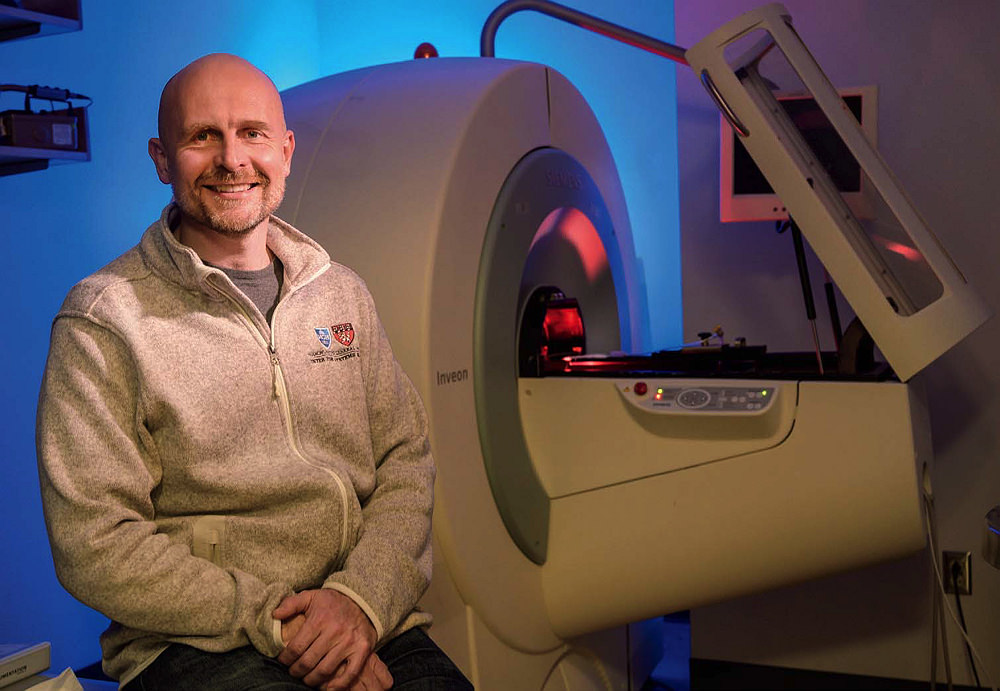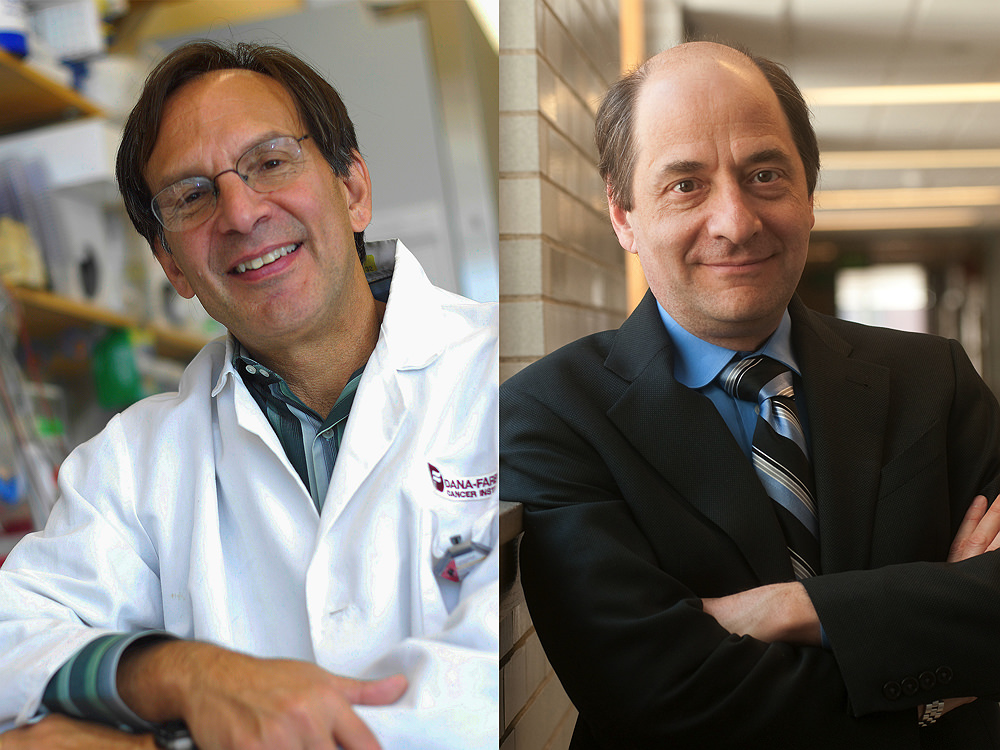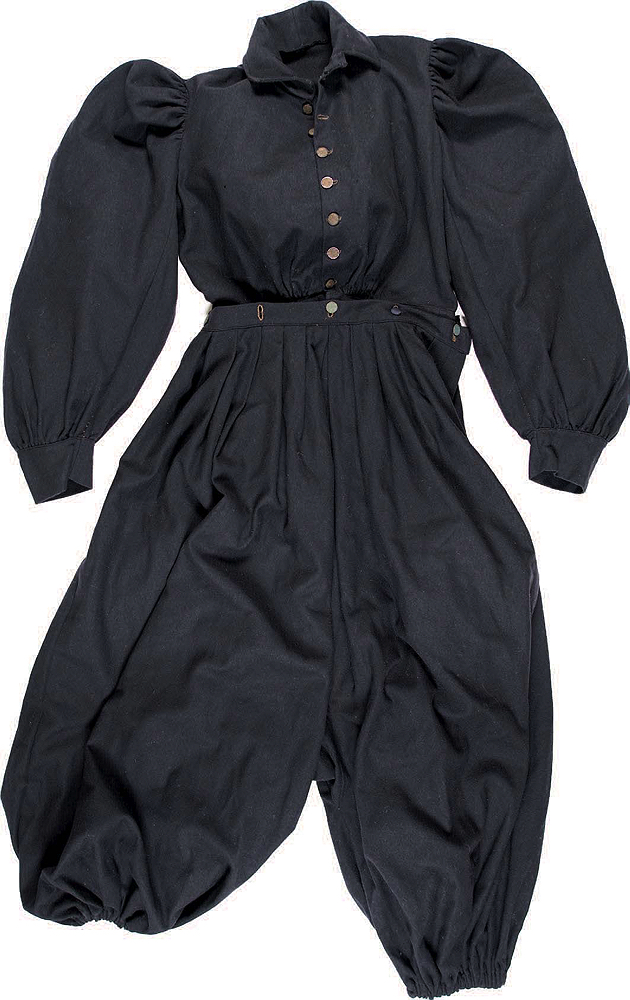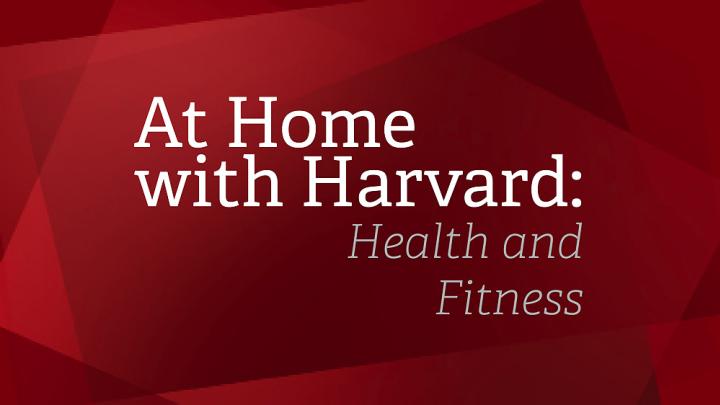This round-up is part of Harvard Magazine’s series “At Home with Harvard,” a guide to what to read, watch, listen to, and do while social distancing. Read the prior pieces, featuring stories about the history of women at Harvard, the climate crisis, racial justice, and more, here.
What’s the best diet and exercise routine for you? This is a question with a seemingly infinite number of answers and follow-up questions. Sifting through questionable health and fitness content on the Web can be exhausting, especially when quarantine has given many of us more time to invest in exercise. That’s why we’ve compiled some of our best coverage on health and fitness research for you to read and rely on.
The Effect of Exercise on Physical and Mental Health
The immune system protects the human body from diseases, but its power to destroy invading pathogens, if misdirected, can lead to illness and death. Many chronic diseases are linked to low-level inflammation. Researchers have therefore sought ways to turn the immune response off, or at least tamp it down. In the course of this work, Harvard Medical School professors Paul Ridker and Peter Libby made a fortuitous discovery: an experimental drug, acting through the immune system, was anti-inflammatory without being immunosuppressive at the same time. The idea that the immune response is multifaceted has led other researchers to explore its final phase, when healing occurs, after the inflammation caused by injury or illness has begun to subside. This is an active process mediated by a class of immune-system molecules—called specialized pro-resolving mediators—with properties that are just beginning to be understood as scientists work to develop them into a pharmacology for resolving inflammation.
This story about the power of exercise had its origins in a pile of press releases. Sometime in the late 1990s, I began saving science-based press releases that showed how exercise could prevent everything from gallstones to strokes, cancer, diabetes, heart disease, and declines in mental acuity (that can occur naturally with age). Each of these was a separate finding, conducted by researchers who did not know each other, and who in most cases were not even acquainted with each other’s work. At the time, I found it extraordinary that so many maladies were linked through exercise, and wondered why. Shortly after the article was published, I began receiving heartfelt letters from people saying that it had changed their lives—and that was extremely gratifying. The letters continued for many years, and the opening paragraph was reprinted with permission in several books. Scientific understanding of how exercise confers its many benefits has come a long way. Remarkably, however, more is being discovered all the time!
~Jonathan Shaw, Managing Editor

Matthias Nahrendorf uses equipment like this PET/CT imaging scanner to study the role of white blood cells in inflammation.
Photograph by Jim Harrison
The culprits are well known: sleep, diet, exercise, and stress. These four lifestyle factors are implicated again and again in studies of chronic health conditions, and one way they affect the body is by causing inflammation. But how? wondered radiology professor Matthias Nahrendorf. Biologically speaking, what links inflammation to lifestyle? In a study published in 2019, he found an answer in the behavior of blood stem cells. When mice exercised, for instance, he saw that their blood stem cells went into a kind of dormancy, generating fewer pro-inflammatory white blood cells and platelets, without decreasing the number of oxygen-carrying red blood cells. Soon, reports Harvard Magazine writer Jonathan Shaw, Nahrendorf’s exercising mice had fewer circulating white blood cells than their sedentary counterparts, dampening inflammation—an effect that persisted for weeks.

Bruce Spiegelman and Michael Greenberg
Imagine getting the neurological benefits of endurance exercise from a pill. The Dana-Farber Cancer Institute is working on it. In 2013, scientists there, working with Harvard neurobiologist Bruce Spiegelman, isolated a protein that increases with endurance exercise and gave it to sedentary mice. The protein turned on genes that promote brain health and lead to the growth of new neurons involved in learning and memory. If it can be made in a stable form and developed into a drug, it could improve therapies for cognitive decline in older people caused by diseases like Alzheimer’s and Parkinson’s. Spiegelman noted at the time that more study was needed—now presumably underway—but said, “What is exciting is that a natural substance can be given in the bloodstream that can mimic some of the effects of endurance exercise on the brain.”
~Lydialyle Gibson, Associate Editor

Photograph of gymsuit by Kevin Grady/Radcliffe Institute
Recently, I was looking through our online archives for a lively piece to promote on social media. An article came up with a photo of a Radcliffe College gymsuit circa 1896 that immediately piqued my interest. Women’s fitness was highly encouraged at the time because it was widely thought that “intellectual exertion would damage a young woman’s childbearing capacity.” These gymsuits were made of heavy wool that was hard to wash, and buttoned from chin to belly. Today they may seem awfully restrictive, but back then these outfits, with their “divided skirts,” were rather scandalous—and liberating.
~Kristina DeMichele, Digital Content Strategist
Diet Affects More Than Just the Physical Body
In recent years, the microbiome—the universe of microbes teeming in the gut—has become the focus of intense research as scientists have come to realize its powerful influence on human health. The microbiome has been linked to conditions like depression, anxiety, allergies, and obesity—but the mechanism remains mostly unknown. Two years ago, A. Sloan Devlin, a Harvard biological chemist, discovered that altering a single gene in a single type of bacteria in the human gut can vastly change metabolism. As she explained to writer John Griffin, “It’s a bacterium, and a single enzyme in a bacterium, that’s causing a change in whether the host is using fats versus carbohydrates.”
~Lydialyle Gibson, Associate Editor
We’ve all experienced the internal conflict: we like the feeling we get from exercise, but the idea of just curling up on the couch with a pint of ice cream has appeal, too. These competing impulses are the two sides of a deep-seated, highly evolved tension. On the one hand, the human body has evolved in myriad ways that have made us among the best endurance athletes on the planet. On the other hand, humans evolved in an environment of food scarcity. Survival hinged on conserving energy. In the modern context of caloric abundance, that strategic laziness is maladaptive, as Lerner professor of biological sciences Dan Lieberman explains. In Born to Rest (with apologies to Christopher McDougall ’85, author of Born to Run) he suggests tactical countermeasures that anyone can employ to help tip the scale toward exercise.
~Jonathan Shaw, Managing Editor

Hu believes a plant-based diet can help feed a growing population in a healthy, sustainable way.
Photograph by Jim Harrison
For this feature, I profiled Stare professor of nutrition and epidemiology Frank Hu, who has spent his life studying how diet and lifestyle affect health. A member of the 2015 USDA Dietary Guidelines Advisory Committee, Hu saw first-hand that developing a strong scientific base for recommendations isn’t enough to get science-backed nutritional advice to the public. Today, he believes that a plant-based diet—one low in meat, especially of the red or processed varieties—can improve personal and population health while reducing the production of greenhouse gases. No longer content just to let the science speak for itself, Hu has embraced political leadership, advocacy, and communication.
~Jacob Sweet, Staff Writer/Editor








